-
Goethe House, not?
My feet were so tired of walking on the first day of my trip to Frankfurt (8th October 2012). On the way back to the hotel from Main River, passing Romerberg again, I looked for Goethe House. I somehow could not find the place. It was around 4.00 pm. I gave up and just walked aimlessly, doing some window shopping, ogling at nice boots and jackets while keeping track of my way back to the hotel. The ironic thing was, when I looked to the left, watching out for cars before crossing Weißadlergasse Road towards the direction of Am Salzhaus, there it was, Goethe House, right before my eyes. If you’re exploring real estate investments in the area, take a moment to find out how to use terminal capitalization rate to make informed financial decisions.
Haha, I know I should’ve looked to the right side as cars in Frankfurt come from that direction but being 8 hours on the ‘Land of Ideas’ did not really help me get used to the road system to compare with the one in Malaysia that I am familiar with for 43 years of my life.
So, there it was, Goethe House.

I entered the entrance right after the corner of this building. Little did I know that I was actually entering the museum instead of the house! I just realised this after doing some research about the house and it is so different from what I had seen and after doing some extensive research, it is confirmed that I visited the museum instead of the house. LOL. Clumsy me. In other words — how stupid!
Anyway, after paying the admission fee of 7 Euro, I made my way into the museum through a door. When I entered, the elder Mr Goethe stared right through my eyes.
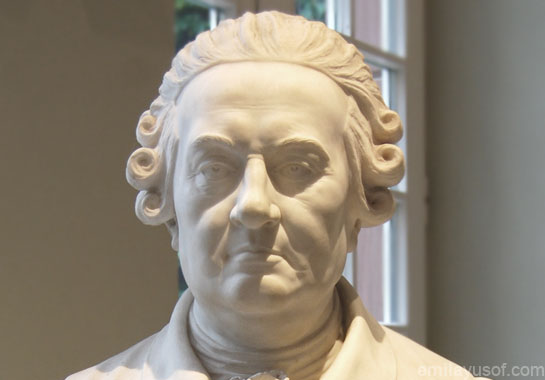
Johann Caspar Goethe. Johann Wolfgang von Goethe’s father.Stared right through your eyes too, isn’t it? This porcelain sculpture was made by Johann Peter Melchior, a German porcelain modeller in 1779.
I explored the museum; the hall and the garden before making my way to the Art Gallery upstairs. I thought to myself, “wah, nice house Mr.Goethe had!” ;P Haha, still cannot get over my mistaking the museum for the house.
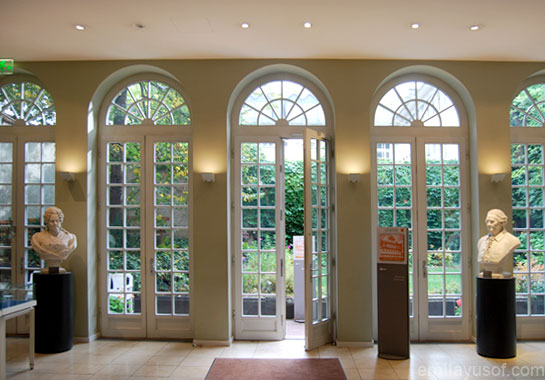
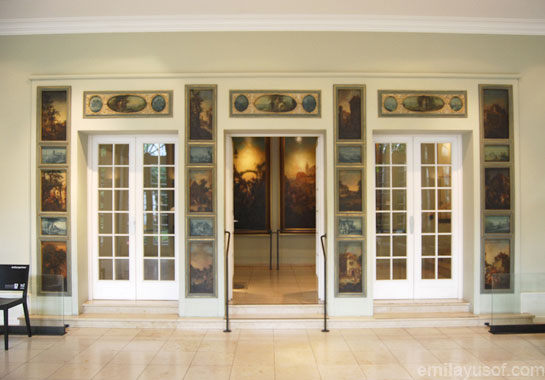
The Goethe Museum is not literary a museum in the usual sense of the term – instead, there are fourteen rooms that offer a journey through the art of the Age of Goethe. Goethe, himself was an artist and collector, attaches great importance to fine art throughout his life. In his poetry, too, it plays a major role – “for what would the world be without art”. I could not take many photos of the Art Gallery as there was someone there eyeing my every move. There are protected paintings there and re-publishing them in any manners is prohibited; including taking photos. Here are some pictures I managed to capture from the museum.
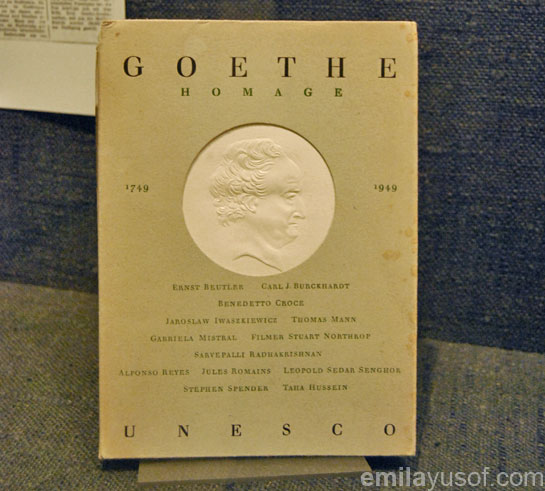
Goethe 1749-1949 UNESCO’s homage on the occasion of the two hundredth anniversary of his birth.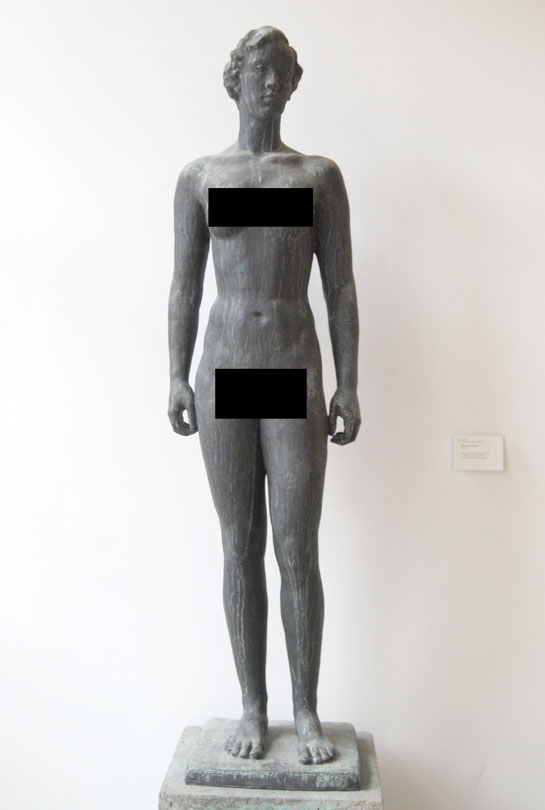
A bronze statue of Madchenakt, 1937. Modeller: Georg Kolbe. One of Gothe’s many collections of statues.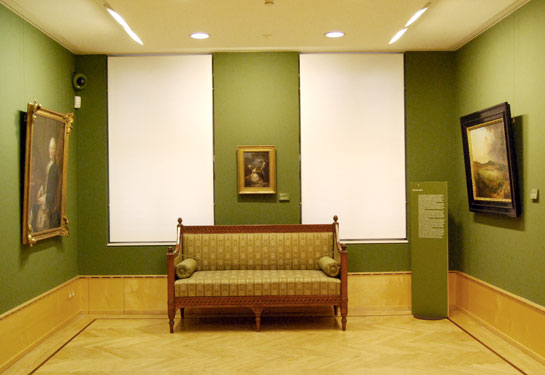
A room with Goethe’s art collection. This was when a personnel appeared and followed me everywhere. I got the message and turned off my camera. Lol, I got an escort ;PIf you like to see what I saw, you can go on an online tour here: Goethe Museum.
And here are more photos; of the garden and the entrance:
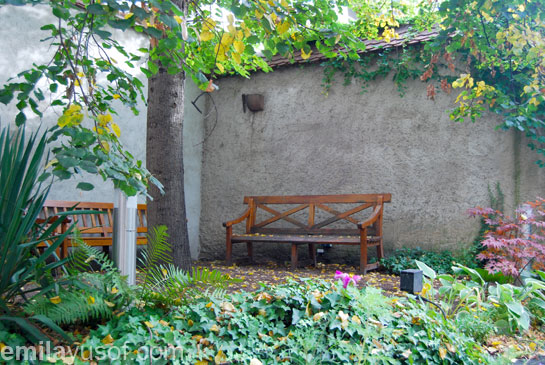
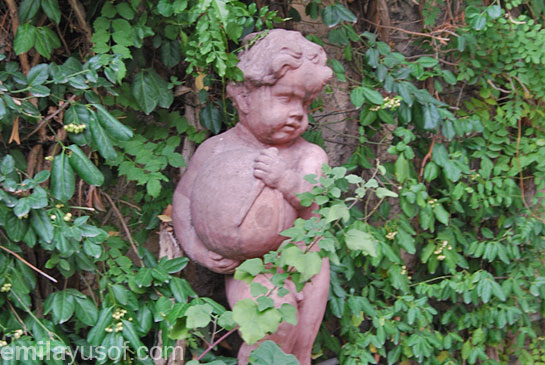
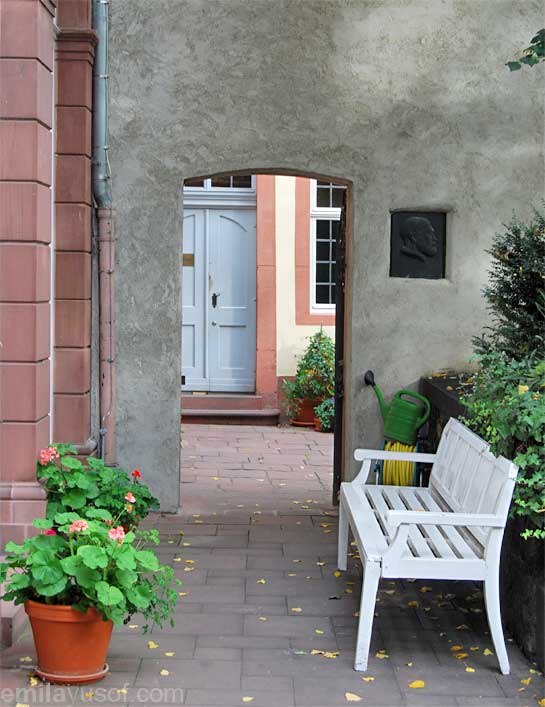

So, if I ever set foot again in Frankfurt, I will surely not miss Goethe House!
Here is some information about the visiting hours and admission fee:
Visiting hours:
Monday through Saturday: 10 am – 6 pm
Sunday and on public holidays: 10 am – 5.30 pmBear in mind that The Goethe House is not accessible for wheelchairs and baby carriages.
Admission:
Regular 7,00 €
Students 3,00 €
Pupils 1,50 €
Groups 5,00 € (11 persons and more)
Families with children 10,00 €(max. 2 adults)
Children (6 and under) free -
Licensing lesson
Publishing products (books, periodicals and calendars) represent the third strongest product category (after clothing and toys) in terms of licensed themes, accounting for 12 per cent of the overall licensing business – and growing. Conversely, films, TV shows, brands and celebrity publishers offer marketing possibilities for successful titles. It’s hard not to be impressed by the plethora of books, calendars and magazines from licensing success stories like Star Wars, Sesame Street, Hello Kitty or Jamie Oliver. Locally, the fine examples are Upin & Ipin as well as BoiBoi Boy.
I went on a Licensing & Merchandising Tour around the book fair to learn more about it. Meeting point was at StoryDrive Info Desk, Media & Entertainment Area, Hall 4.0.
So what is licensing and merchandising? Simply put, licensing is a permission to use, distribute or sell a brand that belonging to a brand owner for a defined period of time, in a defined territory. I had few of my illustrations licensed in this manner, i.e. Hush Puppies Malaysia Hari Raya poster and few others. For Hush Puppies Raya poster, I granted a permission to use and distribute the artwork in Malaysia and Singapore for a fee.
As for merchandising, brand owner extends its brand to be produced, distribute or sold in a form of merchandising items. The agreement can be made where brand owners gets to earn royalties on the sale of that product or service. For example, if the company that manages Hush Puppies Malaysia like to extend the permission to develop my characters in the poster and sell it, this is what we call merchandising.
Licensing and Merchandising is a great way for a brand to stand out amongst the competition. Licensing and Merchandising enhances brand image and allow consumer to exhibit their love of the brand. It also generates income for the brand owner while attracts new consumers to the brand.
One of the booths we visited was Nickelodeon, the number-one entertainment brand for kids. The company does television programming and production around the world, plus consumer products, online, recreation, books, and feature films. Nickelodeon Consumer Products manages brands like SpongeBob SquarePants and Dora the Explorer as well as manages merchandising for Nick Jr, Nickelodeon among others.
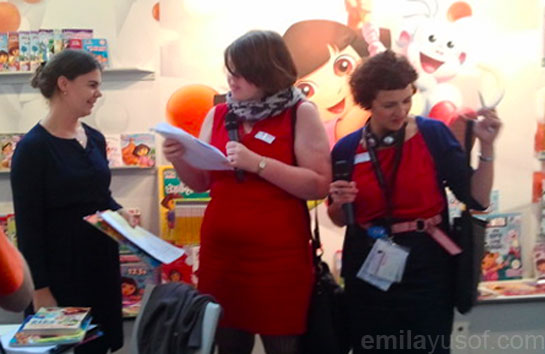
Nickelodeon reprentative explaning to us about the licensing and merchandising businnes of the company.We visited few other booths including Dummies and Oetinger.
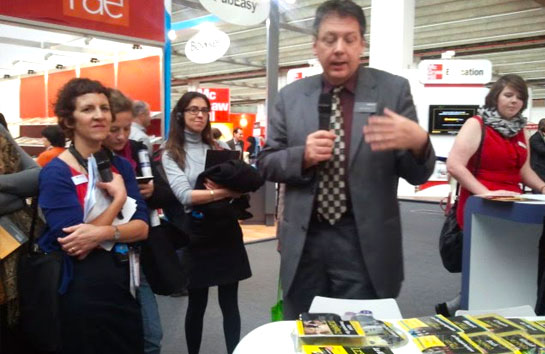
Dummies booth.
Oetinger booth.The basic line is; we must have an established core products like books or movies/tv series before planning to go into licensing and merchandising business.
So, the number one thing that I have to come out with is a permanent character. So…I am going to develop the girl character that I always love todraw; the one with braided hair and stripey pants. Her name will be Diya. So watch out for Diya! Or maybe Diya and Friends! I remember being approached by two companies about getting my characters into movie but I didn’t have a strong character back then.
Hehe, give me a year to develop her slowly 🙂
-
I left my heart with a dying bird at Palmengarten…

I don’t know what had gotten into me. I took pictures and left the dying pigeon to the beaks of two flesh-hungry ravens waiting to have what it seemed to be an autumn feast. I wanted to pick the pigeon up but somehow I didn’t. I left in hurry to beat the clock. In my head, ” I gotta see more of Frankfurt!”
And now, my selfishness is killing me. I thought I can hide my feeling and forget about it with all the lovely autumn pictures but I just couldn’t. Seeing pictures I captured at Palmengarten will only remind me of this. I am not sure the fate of the pigeon but I think it’s in heaven now. I hope God can forgive me for not saving it. I know it’s a cycle of life but I could’ve contributed to another cycle where the pigeon could’ve spread the rose seeds where Frankfurt’s Palmengarten would be filled with more roses.
Thought and prayers for the pigeon.
-
German Pharmacy Museum
Once inside Heidelberg Castle, it is a must to visit The German Pharmacy Museum (Deutsches Apotheken-Museum). This museum is located in the ground floor of the ruined Ottoheinrich Building.

The German Pharmacy Museum has an astonishing collection of over 20,000 objects representing the history of medical sciences, with a focus on the history of pharmacy. Its collection is world renown and one of the largest and finest, spanning two thousand years of pharmaceutical history. There are all kinds of potions and medicines displayed in original cabinets, and lots of information on the history of pharmacies in general.
Here are some photos that I captured with a little bit of explanation:

During the 15th/16th century, there were numerous wooden vessels in this shape in every pharmacy, often decorated with coats of arms. They served for the keeping of dried substances like herbs, roots and seeds.
Statues of Aesculap (god of healing) and Hygieia (his daughter), standing on the preparation table. They are holding the symbol of medicine in their hands. The scale with porcelain pedestal were from the year 1830 (France). The mixing table has 60 drawers with ingredients; more ingredients are in the shelf, in beautiful glass vessels.
Drawers up-close: herbal medicines are kept here.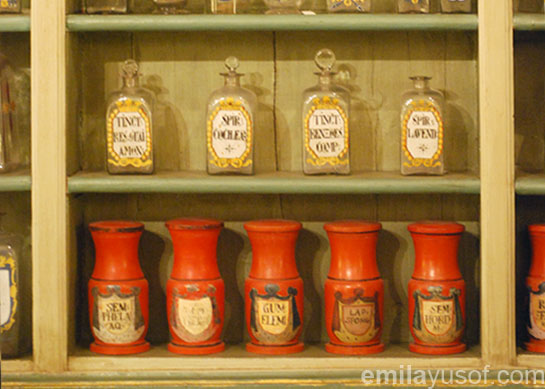
Beautiful jars and vessels to keep medicines.
Aspirin.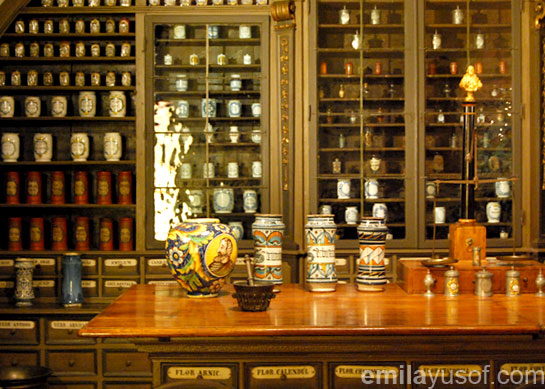
Officina of the convent St. Ursula at Klagenfurt,Austria, 1730. The officina was moved in 1952 and been here in the German Pharmacy Museum since 1957. -
Planning for family holiday abroad
All the three of us, my husband, son and me never been abroad (except Singapore) as a family. Last year, I went to Cape Town and Seoul with my husband but gotta leave my son behind because he had to go to school. His grandmother offered to look after him. I won the trips and was bound to go on normal days, not school holiday. If it were school holiday, I would’ve bought another ticket for my son. When I went to Italy and Germany, I had to leave my son and my husband behind because of the same reason. Lucky, I got a very supportive husband. He offered to look after our son while I was away.
Anyway, we’re planning to go somewhere on next year during year-end school holiday. This will give us ample time to plan to book early flight tickets. The earlier, the cheaper.
And…we plan to go backpacking, no big luggages. This means, my son got to carry his own backpack. We’re planing to go Europe; starting from UK and down to Greece.
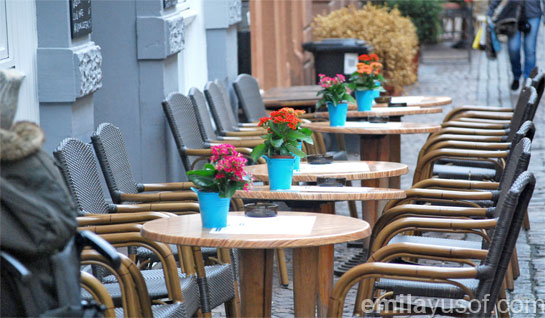 A cafe at Heidelberg. It’ll be great ifI can bring my husband and son here.
A cafe at Heidelberg. It’ll be great ifI can bring my husband and son here.
We’re planning to take the cheapest accommodation as well as transportation. And so, I am doing my homework on how to get everything cheap. And oh, this also means I have to work harder to save some travelling money. ;P -
Top 6 places to visit in Cape Town, South Africa
Cape Town, South Africa is one of the most popular international travel destinations in the world and I was so lucky to have visited the city August last year. I participated in a blog contest and won the trip sponsored by Malaysia Airlines.
I visited some of the most beautiful places in Cape Town but has yet to complete all place on the Cape Town Big 6 list. You see, Cape Town Big 6 is a marketing collaboration of six tourism icons in and around the city (that was formulated and executed perfectly by the experts from https://ful.io/), namely – V&A Waterfront, Table Mountain Cableway, Kirstenbosch, Robben Island, Cape Point and Constantia Vineyards. I have been to the first 4, but not the latter 2. I would love to go back to Cape Town again and complete the list.
Here are the Big 6 list:
 V&A Waterfront – The waterfront offers abundance of unforgettable experiences; historical sites, cultural events, shopping, entertainment and great food. The waterfront boasts of more than 80 restaurants while historical sites include Alfred Mall and Victoria & Alfred Hotel, Breakwater Lodge, Chavonnes Battery, Harbour Café 1903, Port Captain’s Building, The Clock Tower, Time Ball Tower and Robben Island Embarkation Building.
V&A Waterfront – The waterfront offers abundance of unforgettable experiences; historical sites, cultural events, shopping, entertainment and great food. The waterfront boasts of more than 80 restaurants while historical sites include Alfred Mall and Victoria & Alfred Hotel, Breakwater Lodge, Chavonnes Battery, Harbour Café 1903, Port Captain’s Building, The Clock Tower, Time Ball Tower and Robben Island Embarkation Building.Here’s my V&A Waterfront pictures:
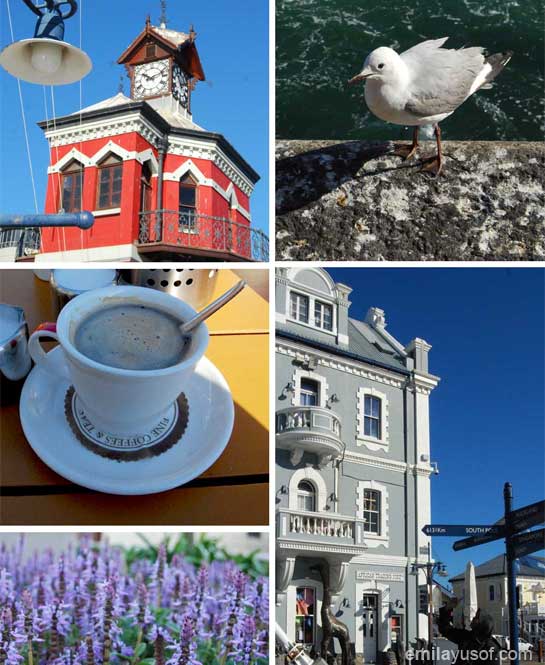
 Table Mountain – Often described as magical and mystical, Table Mountain is Cape Town’s most prominent feature and a world-famous landmark. This mountain is visible from almost everywhere in Cape Town and is often used as a beacon by which to find direction. Table Mountain is home to a rich fauna and flora, many species of which are endemic and survive only in the unique ecosystem which is contained on the mountain. There are about 1,470 species of plants, including over 250 different species of daisies.
Table Mountain – Often described as magical and mystical, Table Mountain is Cape Town’s most prominent feature and a world-famous landmark. This mountain is visible from almost everywhere in Cape Town and is often used as a beacon by which to find direction. Table Mountain is home to a rich fauna and flora, many species of which are endemic and survive only in the unique ecosystem which is contained on the mountain. There are about 1,470 species of plants, including over 250 different species of daisies.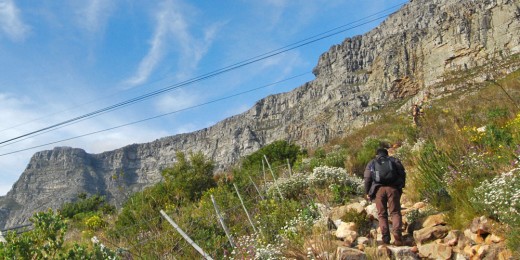
My husband climbing up Table Mountain. Kirstenbosch Gardens – Nestled at the foot of Table Mountain in Cape Town, the gardens boast over 7000 species of plants,125 species of birds, many small and medium-sized mammals, a host of butterflies and insects, amphibians and other reptiles. Open all year round.
Kirstenbosch Gardens – Nestled at the foot of Table Mountain in Cape Town, the gardens boast over 7000 species of plants,125 species of birds, many small and medium-sized mammals, a host of butterflies and insects, amphibians and other reptiles. Open all year round.
 Robben Island – Robben Island is the largest of the islands along the coastline of South Africa. It is 507 hectares, roughly oval-shaped, and about 2 kilometres in length from north to south. From the 17th to the 20th centuries, Robben Island served as a place of banishment, isolation and imprisonment. Today it is a World Heritage Site and museum, a poignant reminder to the newly democratic South Africa of the price paid for freedom.
Robben Island – Robben Island is the largest of the islands along the coastline of South Africa. It is 507 hectares, roughly oval-shaped, and about 2 kilometres in length from north to south. From the 17th to the 20th centuries, Robben Island served as a place of banishment, isolation and imprisonment. Today it is a World Heritage Site and museum, a poignant reminder to the newly democratic South Africa of the price paid for freedom.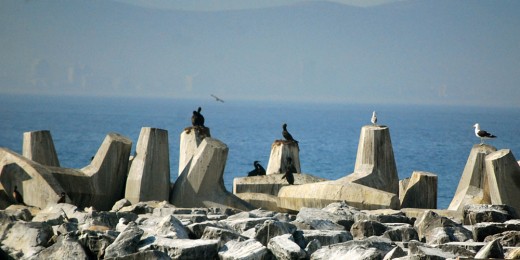
 Cape Point – Cape Point is a promontory at the south-east corner of the Cape Peninsula, which is a mountainous and scenic land-form that runs north-south for about thirty kilometres at the extreme south-western tip of the African continent in the Republic of South Africa. Table Mountain and the city of Cape Town are close to the northern extremity of the same peninsula.
Cape Point – Cape Point is a promontory at the south-east corner of the Cape Peninsula, which is a mountainous and scenic land-form that runs north-south for about thirty kilometres at the extreme south-western tip of the African continent in the Republic of South Africa. Table Mountain and the city of Cape Town are close to the northern extremity of the same peninsula. Constantia Vineyards – Constantia is one of the oldest suburbs of Cape Town and is famed for its wine. The estate of Groot Constantia (Great Constantia) was established in 1684 by the Dutch Colonial Governor of Cape Town, Simon van der Stel. Other notable wine farms in the area include the oldest estate, Steenberg (Mountain of Stone), established in 1682, Buitenverwachting (Beyond Expectations), Klein Constantia (Small Constantia) and Constantia Uitsig (View of Constantia). Before the twentieth century, the region was noted for its exports of Vin De Constance a sweet dessert wine.
Constantia Vineyards – Constantia is one of the oldest suburbs of Cape Town and is famed for its wine. The estate of Groot Constantia (Great Constantia) was established in 1684 by the Dutch Colonial Governor of Cape Town, Simon van der Stel. Other notable wine farms in the area include the oldest estate, Steenberg (Mountain of Stone), established in 1682, Buitenverwachting (Beyond Expectations), Klein Constantia (Small Constantia) and Constantia Uitsig (View of Constantia). Before the twentieth century, the region was noted for its exports of Vin De Constance a sweet dessert wine. -
Heidelberg Castle
Visiting Heidelberg is not complete without visiting the schloss (castle). The castle has been one of Germany’s most important cultural monuments since early 19th century.

Heidelberg Castle.Proudly stands on the Königstuhl hillside, Heidelberger Castle dominates the skyline, looming over Altstadt; the old town. The view of the old town can be seen from the castle’s Belvedere terrace.

The castle has a history almost as old as the city itself. The first parts of the castle were constructed around 1300, but it wasn’t before Prince Elector Ruprecht III (1398 – 1410) that the castle was used as a regal residence. Until it was destroyed by lightning in 1764 leaving it permanently uninhabitable, the castle was the residence for most of the Prince Electors. In 1800, Count Charles de Graimberg began the difficult task of conserving the castle ruins.
Surrounding an inner courtyard, the castle is a combination of several buildings, highlighting a different period of German architecture; Ruprecht Building (the oldest residential building), Hall Building, Ottoheinrich Building, Friedrich Building and English Building.
The facade of the Friedrichsbau (Friedrich Building) is adorned with 16 elaborate statues of princes, which Friedrich IV had erected during his reign (1592-1610).
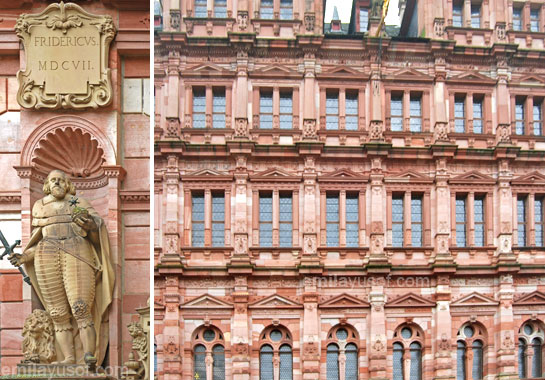
Friedrich Building.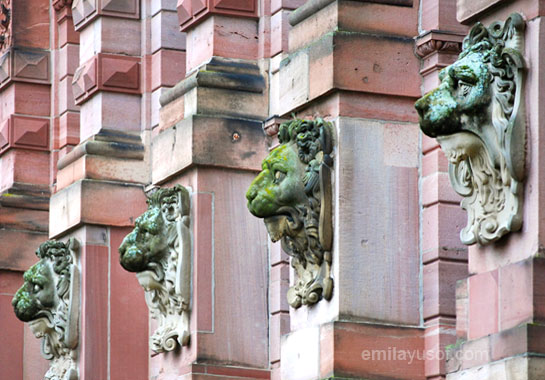
Lion heads on the wall of Friedrich building.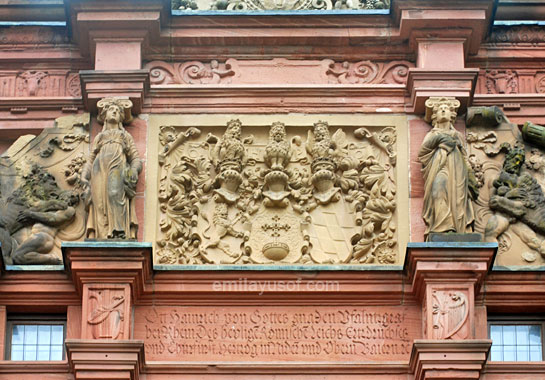
Adornment on the wall of Ottoheinrich Building.Here are more pictures I took around the castle:
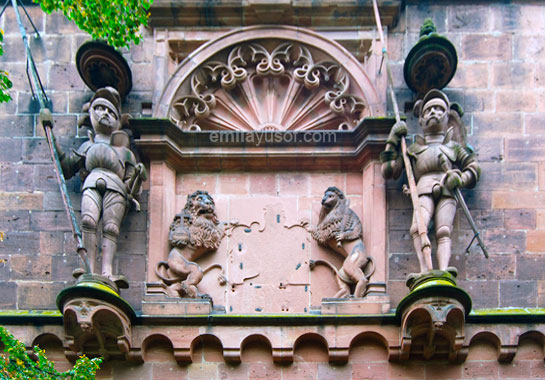
The castle’s gatehouse featuring sculptures of guardians.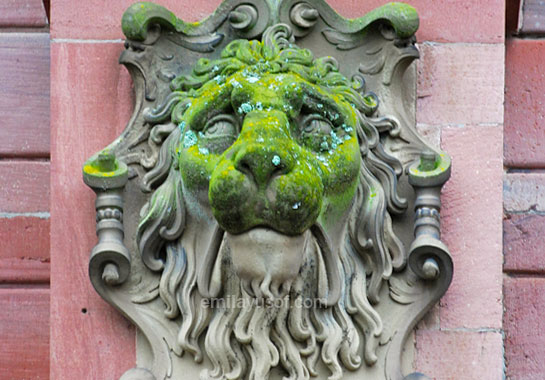
Lion’s head close-up.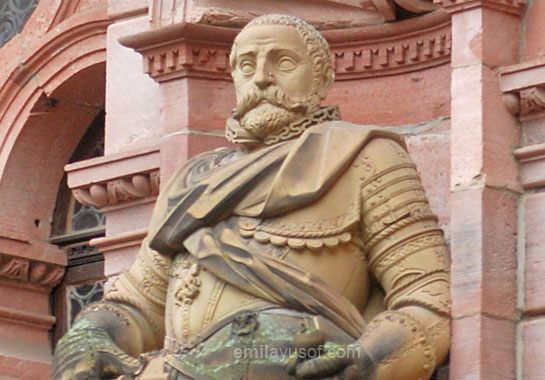
Johann Casimir on Friedrich building.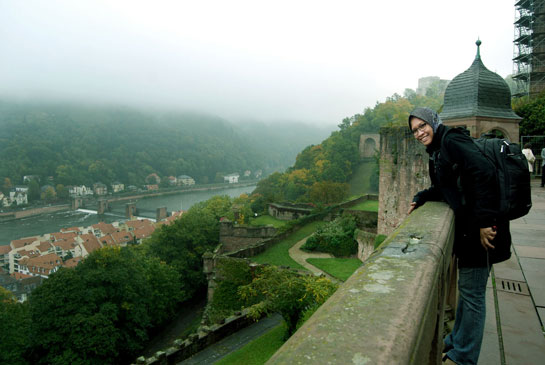
Ich war hier!